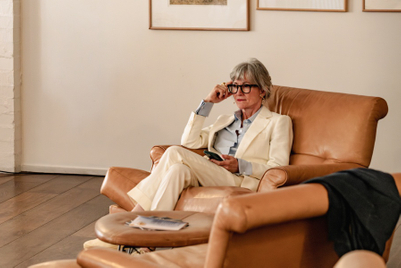
Snap is undergoing a sweeping reorganisation as it attempts to stabilize following several quarters of slowing growth.
The parent company of Snapchat last week slashed 20% of its global headcount—roughly 1,300 people—as part of a “reprioritisation process” to avoid ongoing losses.
The layoffs come as Snap’s growth rate has fallen significantly in recent quarters from triple-digits in 2021. It posted 13% year-over-year revenue growth in Q2 and said last week it is currently tracking at 8% growth, which CEO Evan Spiegel said is “well below what we were expecting.” Snap has lost nearly 80% of its stock value since the beginning of the year.
Snap CFO Derek Anderson told investors in July the business had observed “a fairly steady deceleration” in advertising demand over the last year. At the time, he said the business was planning to reduce operating expenses by slowing hiring.
But in a note to employees last week, Spiegel said “we must now face the consequences of our lower revenue growth and adapt to the market environment.”
He unveiled plans to focus on community and revenue growth and augmented reality as the company looks to “discontinue or substantially reduce investment” in other projects. Canned projects include its recently-launched Pixy drone and Zenly, a social app it acquired in 2017. The company said the cuts could save it US$500 million in costs annually.
Amidst the layoffs, Snap was dealt another blow last week as its top advertising executives Jeremi Gorman and Peter Naylor were hired by streaming giant Netflix. Snap handed oversight of ad products and sales to Jerry Hunter, who was named chief operating officer.
Turbulence could hurt Snap’s ad business in the short-term. Advertisers often pause or pull back spend during times of significant platform upheaval, as was witnessed during Twitter’s second quarter when ad revenue growth slowed to just 2%. The reasons are two-fold: advertisers want stable investments and trusted metrics, and they don’t want to be associated with brand safety risks.
Negative sentiment about Snap has risen 48% over the last month, according to YouGov Signal, which doesn’t bode well for its ad business.
"Snap’s recent departures highlight the fact that they are struggling and will cause some brands to think twice before investing,” said Danielle Wiley, CEO of influencer marketing agency Sway Group.
Some ad buyers are concerned that without Gorman and Naylor, Snap’s relationships with advertisers and appetite for innovation will suffer.
“Snap has always been creative in their approach to building relationships with advertisers and agency partners, rewarding advertisers through production and media credits for their investment and willingness to try new products. If there is a decreased emphasis on new product development and rollout, one of those key attributes that helped them build advertiser continuity is lost,” said Alex Stone, SVP of advanced video and agency partnerships at Horizon Media.
"Snap will definitely need to revisit their overall model if they want to remain competitive and increase the number of advertisers and their client retention,” added Adam Muscott, SVP, of marketing company BAM Media. “I would hate to see them cheapen themselves out of the market by commoditizing themselves.”
But others are hopeful that with renewed focus, Snap could emerge a stronger business in the long run.
“With many of our clients interested in exploring AR as part of their future media efforts, we think that Snap’s decision to focus on this as one of their three strategic priorities could have an overall positive impact in taking their offerings to the next level,” said Cheryl Friedman, director of platforms at Media Matters Worldwide.
“Snap is under immense investor pressure to deliver business results. The moves they're making are all about reducing operational and financial distractions in order to focus on what matters, and what matters most for them right now is their core advertising business. I'd expect Evan [Spiegel] to increase focus and investment in this area even as he's slimming down non-core initiatives at Snap,” said Jordan Fox, head of Laundry Service, a full-service agency under Wasserman Media Group.



.jpg&h=334&w=500&q=100&v=20250320&c=1)
.jpg&h=334&w=500&q=100&v=20250320&c=1)
.jpg&h=334&w=500&q=100&v=20250320&c=1)



.jpg&h=334&w=500&q=100&v=20250320&c=1)
.jpg&h=334&w=500&q=100&v=20250320&c=1)


.jpg&h=268&w=401&q=100&v=20250320&c=1)





.png&h=268&w=401&q=100&v=20250320&c=1)